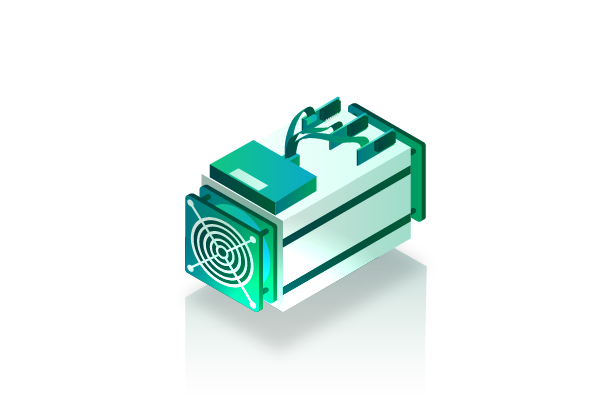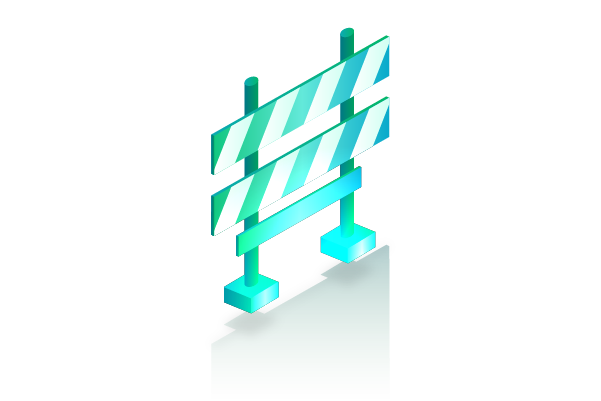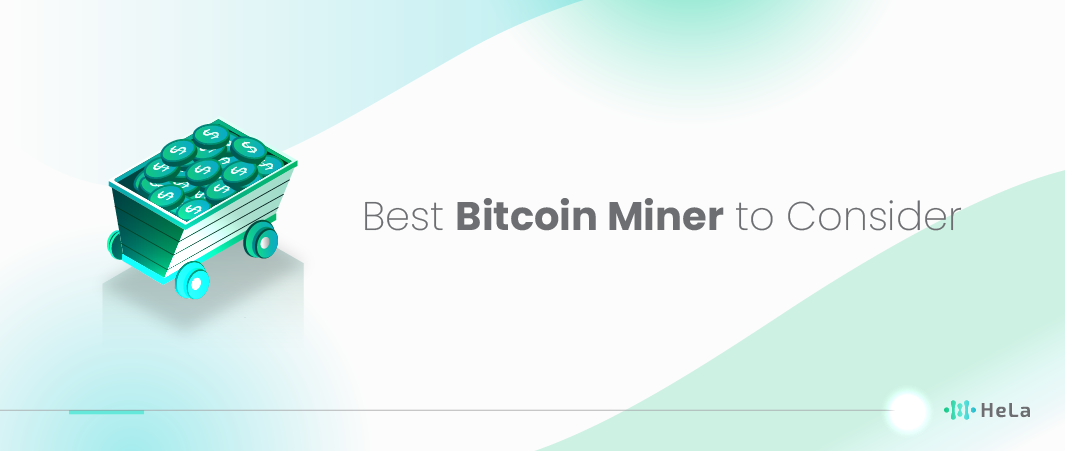Bitcoin mining has evolved significantly since the cryptocurrency was first introduced in 2009. As the value of Bitcoin continues to rise, so does the interest in mining it. However, mining Bitcoin is not as simple as it once was. The process requires specialized hardware, known as miners, which are designed to solve complex mathematical problems and validate transactions on the Bitcoin network. In this article, we will guide you through the top 10 bitcoin miners to consider in 2025.
With a wide array of options available, choosing the right bitcoin miner can be overwhelming, especially for beginners. Whether you’re looking to start your mining journey or upgrade your existing setup, selecting the best equipment is crucial to maximizing your returns and ensuring efficient operations.
We will also explore key factors to consider when selecting a miner, provide tips on setting up your hardware, and discuss common challenges faced by miners today. By the end of this guide, you’ll be well-equipped to make an informed decision and embark on your bitcoin mining venture with confidence.
What is Bitcoin Mining?
Bitcoin mining is the process of validating and adding new transactions to the Bitcoin blockchain. This is achieved through solving complex cryptographic puzzles, which helps to secure the network and ensures the integrity of the transactions. Miners are rewarded with newly minted bitcoins and transaction fees for their efforts.
In the early days of Bitcoin, mining could be done using regular computers. However, as more people started mining and the network’s difficulty increased, specialized hardware known as Application-Specific Integrated Circuits (ASICs) became necessary. These ASIC miners are designed specifically for mining Bitcoin and offer significantly higher performance and efficiency compared to general-purpose computers or even GPUs (Graphics Processing Units).
Bitcoin mining also involves considerable energy consumption and generates substantial heat. Therefore, choosing the right miner involves not just looking at the mining power (measured in hashes per second), but also considering the energy efficiency, cost, and cooling requirements.
Factors to Consider When Choosing a Bitcoin Miner
Choosing the right Bitcoin miner is a critical decision that can significantly impact your mining success and profitability. Here are some key factors to consider:
Hash Rate
The hash rate is a measure of a miner’s computational power. It is expressed in hashes per second (H/s). The higher the hash rate, the more calculations the miner can perform, increasing your chances of successfully mining a block and earning rewards. When comparing miners, look for models with higher hash rates to ensure efficient mining.
Energy Efficiency
Bitcoin mining is energy-intensive, and electricity costs can eat into your profits. Energy efficiency is measured in joules per terahash (J/TH). Lower values indicate better efficiency. Efficient miners consume less power for the same amount of computational work, reducing your operational costs and improving overall profitability.
Also Read: 10 Best Web3 Accelerators to Consider in 2025
Cost
The initial cost of the mining hardware is a significant investment. Prices vary widely depending on the model, hash rate, and energy efficiency. It’s essential to balance the upfront cost with the potential returns. Consider your budget and calculate the expected payback period to determine if a particular miner is a worthwhile investment.
Reliability and Durability
Mining hardware runs continuously under high loads, so reliability and durability are crucial. Look for miners from reputable manufacturers with good reviews and a proven track record. Reliable miners minimize downtime and maintenance costs, ensuring consistent mining operations.
Cooling Requirements
Mining generates a lot of heat, and adequate cooling is necessary to maintain optimal performance and extend the lifespan of your equipment. Some miners come with built-in cooling solutions, while others require external cooling setups. Consider the cooling requirements and ensure you have the necessary infrastructure to manage the heat.
Noise Levels
Bitcoin miners can be noisy, especially when running at full capacity. If you plan to mine at home, consider the noise levels and choose a miner that operates quietly. This will help maintain a comfortable environment and prevent disturbances.
Support and Warranty
Finally, consider the support and warranty offered by the manufacturer. Good customer support can be invaluable if you encounter issues with your miner. A warranty provides peace of mind and protects your investment in case of hardware failure.
Taking the time to evaluate these factors will help you choose a Bitcoin miner that best fits your needs and maximizes your mining potential.
Top 10 Bitcoin Miners to Consider for 2025

When venturing into the world of Bitcoin mining in 2025, it’s crucial to equip yourself with the most efficient and powerful miners available. The following list details the top 10 Bitcoin miners to consider this year, each offering unique features that cater to different needs and scales of operations.
1. Bitmain Antminer S21 Hyd
Bitmain’s Antminer S21 Hyd stands out as a powerhouse in the Bitcoin mining industry. Released in March 2024, this miner boasts an impressive hash rate of 335 Th/s, making it one of the most potent options available. It operates with a power consumption of 5360W, ensuring high energy efficiency. The hydro cooling system further enhances its performance by maintaining optimal temperatures, reducing the risk of overheating and increasing the longevity of the equipment.
2. MicroBT Whatsminer M63S
The MicroBT Whatsminer M63S, released in October 2023, is another top-tier option for Bitcoin miners. It offers a remarkable hash rate of 390 Th/s while consuming 7215W of power. The hydro cooling system ensures that the miner operates efficiently, even under high workloads. This miner is ideal for large-scale operations that require a balance of performance and energy efficiency.
3. Bitmain Antminer T21
Scheduled for release in March 2024, the Bitmain Antminer T21 is designed to deliver excellent performance with a hash rate of 190 Th/s and a power consumption of 3610W. This miner is optimized for the SHA-256 algorithm, making it highly efficient for Bitcoin mining. Its robust air cooling system helps in rapid heat dissipation, ensuring stable operation.
4. MicroBT Whatsminer M66S
The MicroBT Whatsminer M66S, launching in October 2023, combines formidable performance with energy efficiency. It achieves a maximum hash rate of 280 Th/s with a power consumption of 5572W. The hydro cooling system not only boosts performance but also enhances the miner’s durability by preventing overheating.
5. Bitmain Antminer S19 XP Hyd
Bitmain’s Antminer S19 XP Hyd, released in October 2022, is renowned for its exceptional power and efficiency. With a hash rate of 255 Th/s and a power consumption of 5304W, this miner is perfect for professional and large-scale mining operations. Its innovative hydro cooling system ensures optimal performance and longevity.
6. MicroBT Whatsminer M30S++
The Whatsminer M30S++, although released in October 2020, remains a popular choice due to its reliability and good price-to-performance ratio. It offers a hash rate of 112 Th/s with a power consumption of 3392W. This miner is known for its ease of use and long-term durability, making it suitable for various mining setups.
7. Bitmain Antminer S19 Pro
Despite being released in May 2020, the Bitmain Antminer S19 Pro continues to be one of the most efficient Bitcoin miners available. It provides a hash rate of 110 Th/s and consumes 3245W of power. This miner is favored for its high efficiency and reliability, making it a strong contender for both new and experienced miners.
8. Canaan Avalon Made A1466
The Canaan Avalon Made A1466, released in September 2023, offers a competitive option with a hash rate of 150 Th/s and a power consumption of 3230W. Known for its efficiency and stable performance, this miner is a great alternative for those looking to diversify their mining equipment beyond Bitmain and MicroBT products.
9. Halong Mining DragonMint T1
The Halong Mining DragonMint T1 is a cost-effective option for smaller operations. With a hash rate of 16 Th/s and a power consumption of 1480W, this miner supports over 40 SHA-256 cryptocurrencies. It is lightweight and known for its power efficiency, making it a suitable choice for those with a limited budget.
10. Bitmain Antminer S19k Pro
The Bitmain Antminer S19k Pro, though often out of stock due to high demand, offers a hash rate of 120 Th/s with a power consumption of 3520W. This miner is backed by Bitmain’s industry-leading technology, ensuring high performance and reliability. It is an excellent choice for those looking for top-tier hashing power.
Choosing the right Bitcoin miner in 2024 involves considering various factors such as hash rate, power consumption, cooling systems, and overall efficiency. The miners listed above are among the best available, catering to different needs and scales of operations. Whether you’re a large-scale professional or a smaller operation, there is a miner on this list that can help you maximize your Bitcoin mining potential.
How to Set Up Your Bitcoin Miner

Setting up your Bitcoin miner can seem daunting at first, but with a clear step-by-step process, you can get your mining operation up and running smoothly. Here’s a guide to help you set up your Bitcoin miner:
1. Unbox and Inspect Your Miner
Carefully unbox your mining hardware and inspect it for any visible damage. Make sure all components, including cables and connectors, are included and in good condition.
2. Choose a Suitable Location
Select a location with good ventilation, stable internet connection, and access to sufficient power. Bitcoin miners generate a lot of heat and noise, so consider placing them in a well-ventilated, isolated space such as a basement or garage.
3. Install Cooling Solution
Effective cooling is crucial to maintain optimal performance and prolong the life of your mining hardware. Depending on your miner, you might need additional fans or even an air conditioning unit. Ensure there is adequate airflow around your miner to dissipate heat effectively.
4. Connect the Power Supply
Connect your miner to a reliable power supply. Ensure the power supply unit (PSU) matches the miner’s specifications and can handle its power requirements. Securely connect all power cables to avoid any loose connections.
5. Connect to the Internet
Your miner needs a stable internet connection to communicate with the Bitcoin network. Use an Ethernet cable to connect your miner directly to your router for the most stable connection. Wi-Fi connections are generally not recommended due to potential instability.
6. Configure the Miner
Turn on your miner and access its configuration settings through a web browser on your computer. You’ll need the miner’s IP address, which can be found on your router’s client list. Once logged in, configure your mining settings, including:
- Mining Pool: Join a mining pool by entering the pool’s URL, your worker ID, and password. Mining pools allow miners to combine their computational power and share the rewards.
- Wallet Address: Enter your Bitcoin wallet address where your mining rewards will be sent.
- Mining Software: Some miners come with pre-installed software, while others might require you to download and install it. Follow the manufacturer’s instructions for installing and configuring the mining software.
7. Start Mining
After configuring your miner, start the mining process through the miner’s interface. Monitor the miner’s performance, including hash rate and temperature, to ensure everything is running smoothly.
8. Regular Maintenance
Regularly check your miner for dust buildup and clean it to maintain optimal performance. Monitor your miner’s performance and temperature to ensure it’s running efficiently. Keep software and firmware updated to benefit from improvements and security patches.
Common Challenges in Bitcoin Mining and How to Overcome Them

Bitcoin mining can be a rewarding endeavor, but it comes with its fair share of challenges. Understanding these common issues and how to address them can help you maintain a successful and efficient mining operation.
1. High Energy Consumption
Bitcoin mining is energy-intensive, and electricity costs can quickly add up. This can significantly impact your profitability, especially in regions with high electricity rates.
Solution:
- Opt for energy-efficient miners that offer a high hash rate with lower energy consumption.
- Consider renewable energy sources such as solar or wind power to reduce long-term energy costs.
- Implement energy-saving practices, such as mining during off-peak hours when electricity rates may be lower.
2. Overheating
Mining hardware generates a lot of heat, which can lead to overheating and hardware damage if not properly managed.
Solution:
- Ensure adequate ventilation in your mining area.
- Use additional cooling solutions like fans or air conditioning units.
- Regularly clean your miner to prevent dust buildup, which can obstruct airflow and reduce cooling efficiency.
3. Noise Levels
Bitcoin miners can be quite noisy, which can be a disturbance if you’re mining at home or in a shared space.
Solution:
- Choose miners known for quieter operation if noise is a concern.
- Set up your mining operation in an isolated area, such as a basement or a soundproofed room.
- Use noise-dampening enclosures to reduce the sound emitted by your mining hardware.
4. Network Connectivity Issues
Stable internet connectivity is crucial for efficient mining. Any disruption can result in downtime and loss of potential earnings.
Solution:
- Use a wired Ethernet connection instead of Wi-Fi for a more stable internet connection.
- Consider using a backup internet connection to ensure continuous operation in case your primary connection fails.
- Regularly monitor your network’s performance and address any issues promptly.
Also Read: 12 Expert Solidity Gas Optimization Techniques
5. Security Risks
Mining operations can be targeted by hackers looking to steal your rewards or disrupt your activities.
Solution:
- Use strong, unique passwords for your mining accounts and hardware.
- Enable two-factor authentication (2FA) on your mining pool accounts.
- Keep your mining software and firmware up to date to protect against security vulnerabilities.
- Use a firewall and antivirus software to protect your mining rig from cyber threats.
6. Market Volatility
The value of Bitcoin can be highly volatile, which can affect the profitability of your mining operation.
Solution:
- Stay informed about market trends and adjust your mining strategy accordingly.
- Consider diversifying your mining activities by mining other cryptocurrencies with lower volatility.
- Use financial tools such as futures contracts or options to hedge against price fluctuations.
7. Hardware Failures
Mining hardware operates under high stress and can experience failures over time.
Solution:
- Invest in high-quality, reliable mining hardware from reputable manufacturers.
- Regularly maintain and inspect your equipment to catch potential issues early.
- Keep spare parts and backup equipment on hand to quickly replace any failing components.
By anticipating these challenges and implementing effective solutions, you can ensure a more stable and profitable mining operation.
Conclusion
Bitcoin mining offers a unique opportunity to participate in the exciting world of cryptocurrency. However, it requires careful planning, significant investment, and ongoing management to be successful. By understanding the intricacies of mining, choosing the right hardware, and being prepared for common challenges, you can maximize your chances of profitability. The top 10 miners for 2025 we’ve reviewed provide a range of options suitable for different budgets and needs, ensuring there’s a miner for everyone.
Setting up your mining hardware correctly is crucial to ensuring efficient operations. From choosing a suitable location to configuring your miner and managing cooling requirements, each step plays a vital role in your mining success. Regular maintenance and monitoring can help you avoid common pitfalls and keep your miner running smoothly. Despite the challenges associated with Bitcoin mining, such as high energy consumption, noise, and market volatility, there are effective solutions to mitigate these issues.
In conclusion, Bitcoin mining is a dynamic and potentially lucrative activity that requires a strategic approach. With the right knowledge, tools, and preparation, you can embark on your mining journey with confidence and look forward to the rewards that come with successful mining. Stay informed, be prepared, and your efforts in the world of Bitcoin mining can pay off significantly.
Disclaimer: The information provided by HeLa Labs in this article is intended for general informational purposes and does not reflect the company’s opinion. It is not intended as investment advice or recommendations. Readers are strongly advised to conduct their own thorough research and consult with a qualified financial advisor before making any financial decisions.

Joshua Soriano
I am a writer specializing in decentralized systems, digital assets, and Web3 innovation. I develop research-driven explainers, case studies, and thought leadership that connect blockchain infrastructure, smart contract design, and tokenization models to real-world outcomes.
My work focuses on translating complex technical concepts into clear, actionable narratives for builders, businesses, and investors, highlighting transparency, security, and operational efficiency. Each piece blends primary-source research, protocol documentation, and practitioner insights to surface what matters for adoption and risk reduction, helping teams make informed decisions with precise, accessible content.
- Joshua Soriano#molongui-disabled-link
- Joshua Soriano#molongui-disabled-link
- Joshua Soriano#molongui-disabled-link
- Joshua Soriano#molongui-disabled-link

